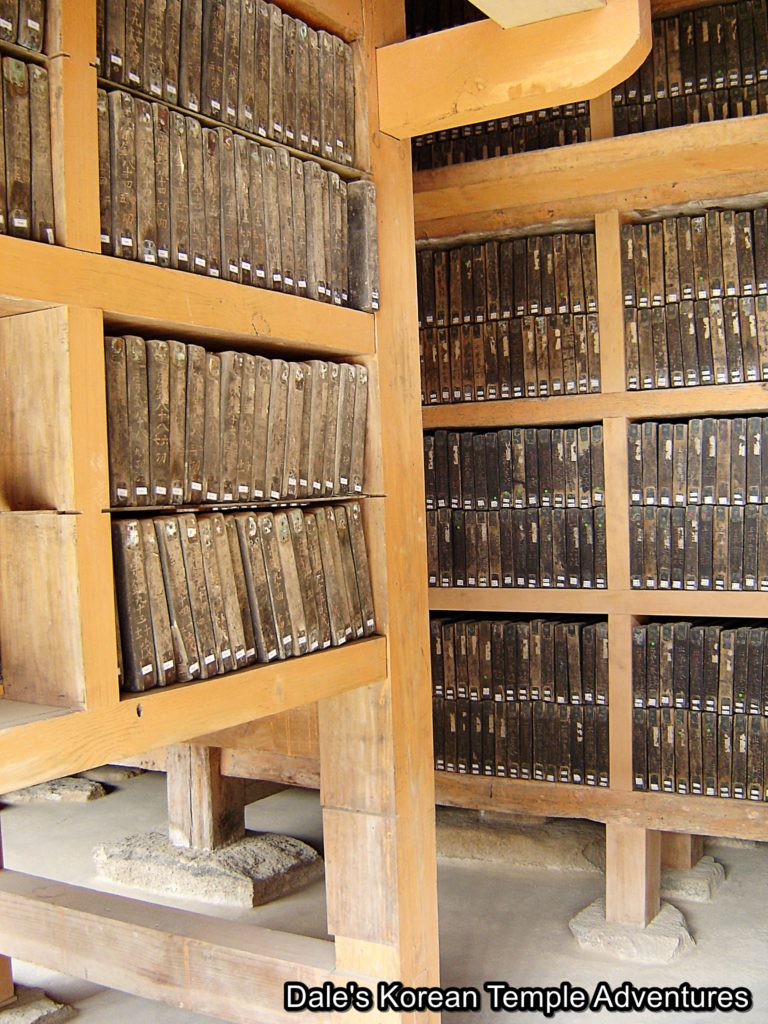
Hello Again Everyone!!
Haeinsa Temple, which means “Ocean Mudra Temple,” dates back to 802 A.D., when it was founded by the monks Suneung and Ijeong after their return from their religious travels to China. According to legend, and the temple’s foundation myth, the two monks helped to heal the wife of King Aejang of Silla (r.800-809). As a sign of gratitude, the king gave the funds to the two monks to help construct Haeinsa Temple. Through the centuries, the temple has been expanded numerous times like in 1488, 1622, and 1644. Tragically, Haeinsa Temple was burned to the ground in 1817. It was rebuilt a year later. In total, the temple has suffered through seven disastrous fires. Fortunately, and for which the temple is known, the Tripitaka Koreana, which are 81,258 wooden blocks that comprise the Buddhist scripture, has been spared these destructive fires. Deservedly, the Tripitaka Koreana (National Treasure #32) and the Janggyeong-panjeon (National Treasure #52) were named a UNESCO World Hermitage Site in 1995.
Alongside Tongdosa Temple (Buddha) in Yangsan, Gyeongsangnam-do, Songgwanga Temple (sangha, Buddhist community), Haeinsa Temple (dharma) is one of the Three Jewel Temples (삼보사찰, Eng. Sambosachal). Not only is Haeinsa Temple culturally and historically important, but it’s beautifully located in Gayasan National Park.
Walking up the trail that leads to the temple grounds, you’ll be joined by the beautiful Gaya River. The scene is beautiful in its meditative simplicity. And the first structure to greet you at the temple is the equally simplistic Iljumun Gate. Up a pathway that’s joined by column of trees on either side is the Cheonwangmun Gate with four murals of the Four Heavenly Kings inside.
Stepping out on the other side of the Cheonwangmun Gate, but before passing through the Haetalmun Gate that allows you access to the lower courtyard at Haeinsa Temple, make sure to take the time to step inside the former Sanshin-gak. With Sanshin (The Mountain Spirit) exiled its former shrine hall during the 1990s, the hall was converted to a Guksa-dang Hall. Inside this hall is a beautiful mural dedicated to the shaman spirit that helps protect the temple grounds for which Haeinsa Temple takes up residence.
Finally arriving in the lower courtyard, but before passing into the upper courtyard, take your time and have a look around the beautiful Jong-gak, or Bell Pavilion, in English, as well as the Gugwan-ru Pavilion that shields the upper courtyard from view.
Passing by either side of the Gugwan-ru Pavilion, you’ll find the Daejeokgwang-jeon Hall, which is the main hall at Haeinsa Temple, straight ahead. Resting on the main altar inside the Daejeokgwang-jeon Hall is a centralized statue of Birojana-bul (The Buddha of Cosmic Energy). The exterior walls to this hall are adorned with the Palsang-do (The Eight Scenes from the Historical Buddha’s Life).
Joining the main hall on the upper courtyard is the Gwaneum-jeon Hall to the right and to the left there’s some monk dorms. There are three additional shrine halls to the far right. They consist of the Myeonbu-jeon Hall, the Daebiro-jeon (with three additional incarnations of Birojana-bul inside), and the octagonal Dokseong-gak.
But it’s to the rear of the Daejeokgwang-jeon main hall, and up an embankment and a set of stairs, that you’ll find the Janggyeong-panjeon library that houses the Tripitaka Koreana. The wood blocks of the Tripitaka Koreana were first made in 1087; however, they were later destroyed by the invading Mongols in 1232. To help inspire divine assistance, King Gojong (r.1213-1259) ordered that the set be remade. Over a twelve year period, the Tripitaka Koreana were completed. And in 1398, the set was moved to its present home of Haeinsa Temple.
Admission to the temple is 3,000 won for adults and 700 won for children.
HOW TO GET THERE: From the Seobu Bus Terminal in Daegu, you can get an express bus to Haeinsa Temple. The bus leaves about every 40 minutes, and the bus ride lasts about an hour and a half.
OVERALL RATING: 10/10. While a bit hard to get to, and out of the way in Hapcheon, Gyeongsangnam-do, Haeinsa Temple is well worth the effort to get to. The Tripitaka Koreana and the Janggyeong-panjeon simply dazzle the mind. Adding to these masterful Buddhist achievements is the beautiful nature of Gayasan National Park and the countless amount of shrine halls that visitors can explore including the highly unique Dokseong-gak, which houses the Lonely Saint shaman deity, and the Guksa-dang Hall.
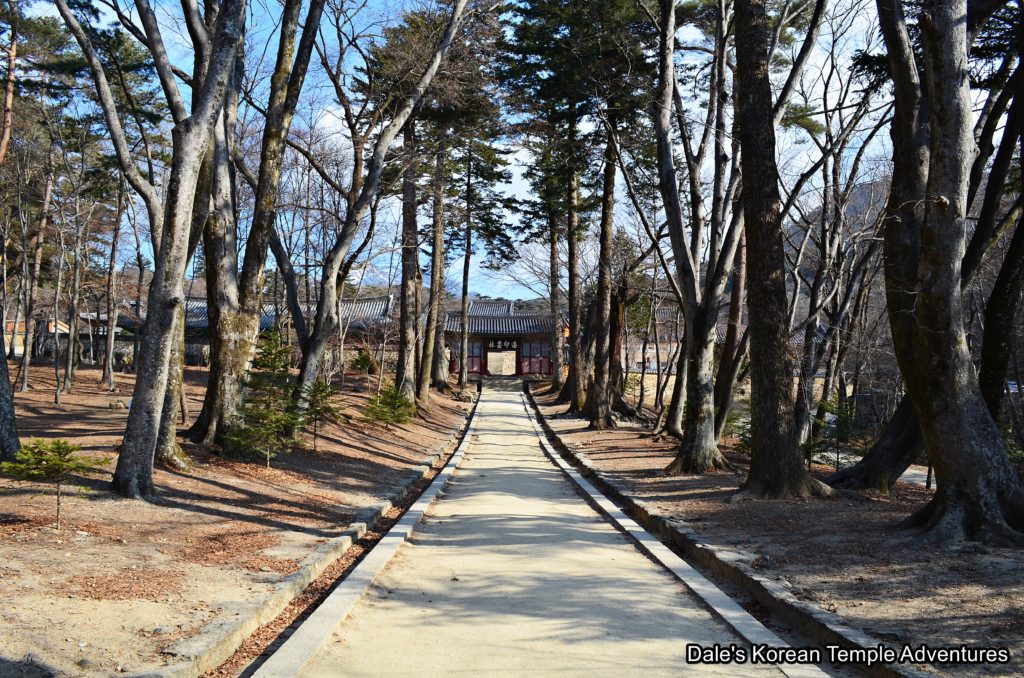
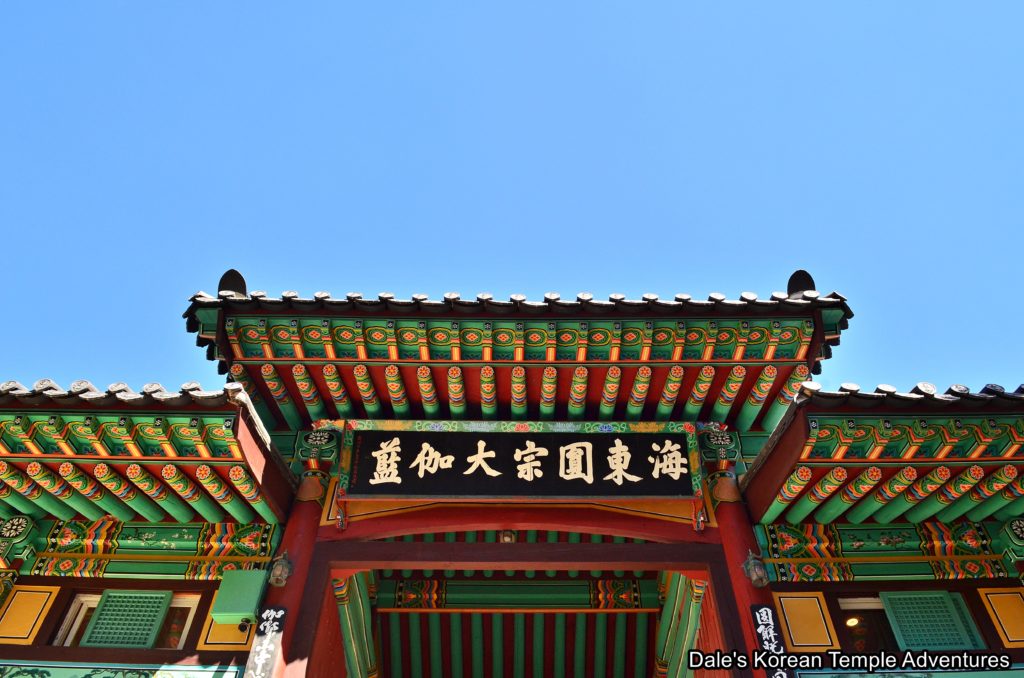
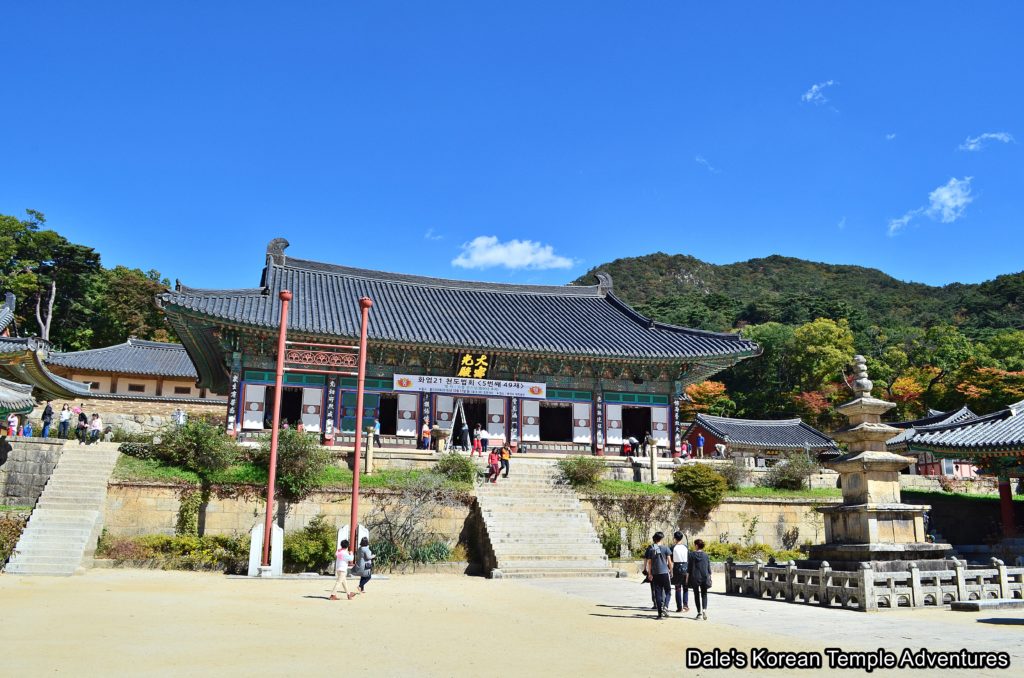
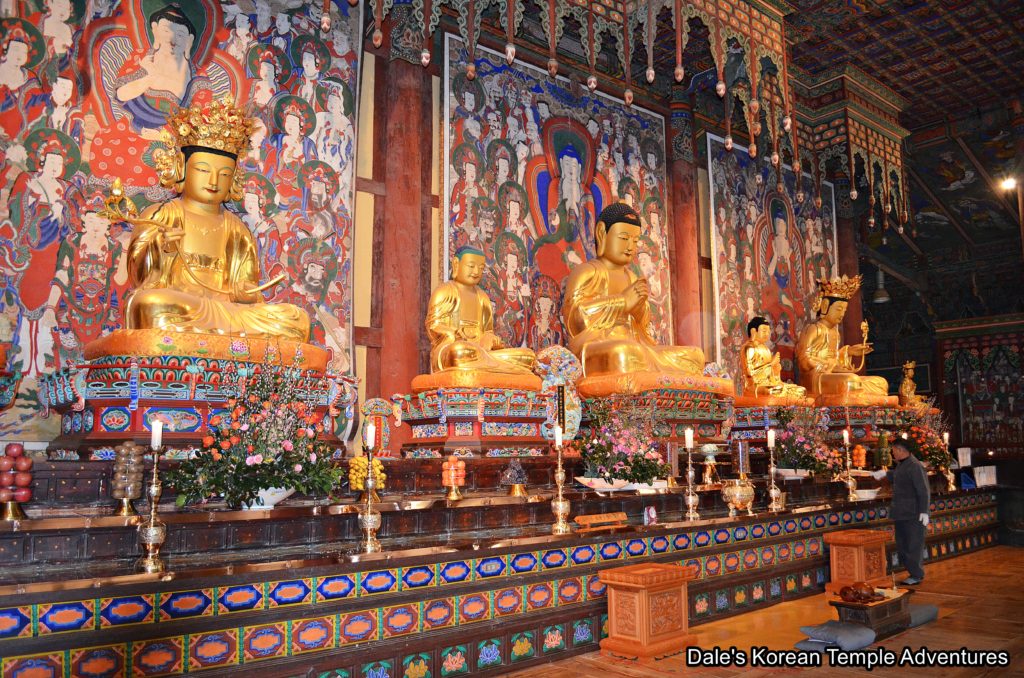
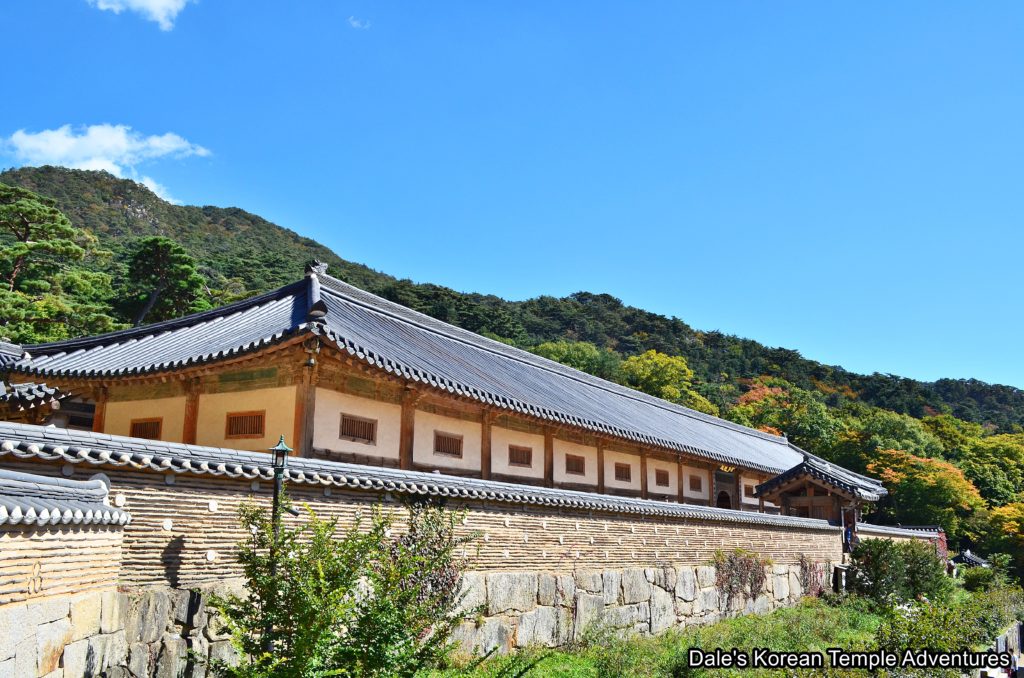


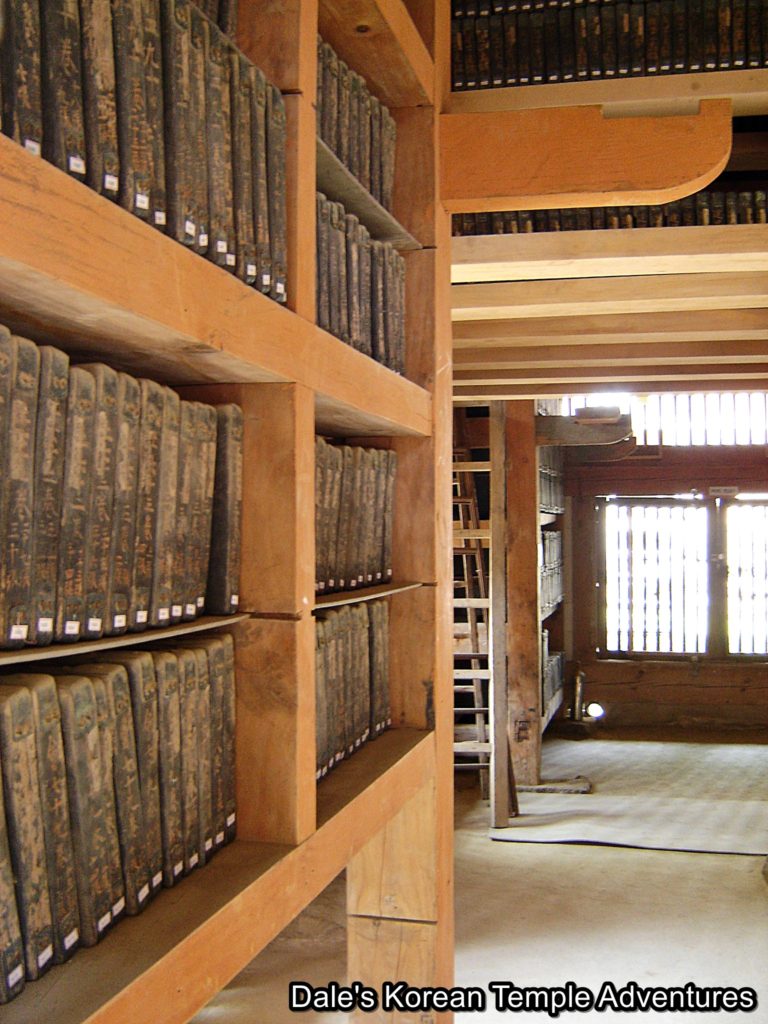
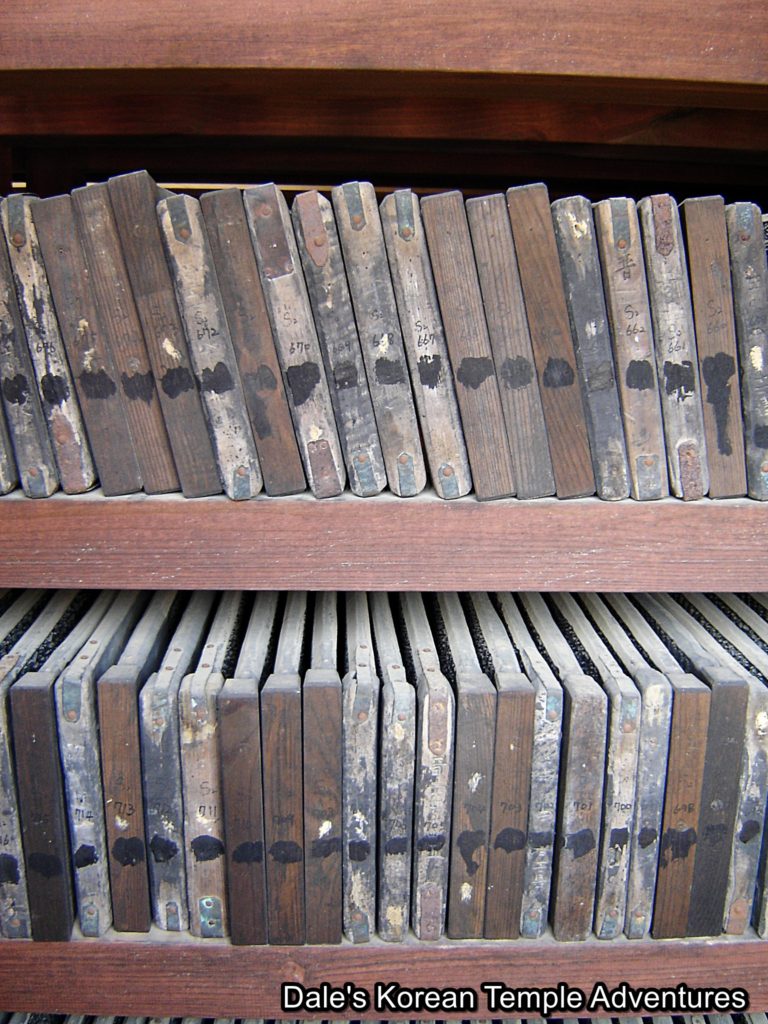


Recent comments